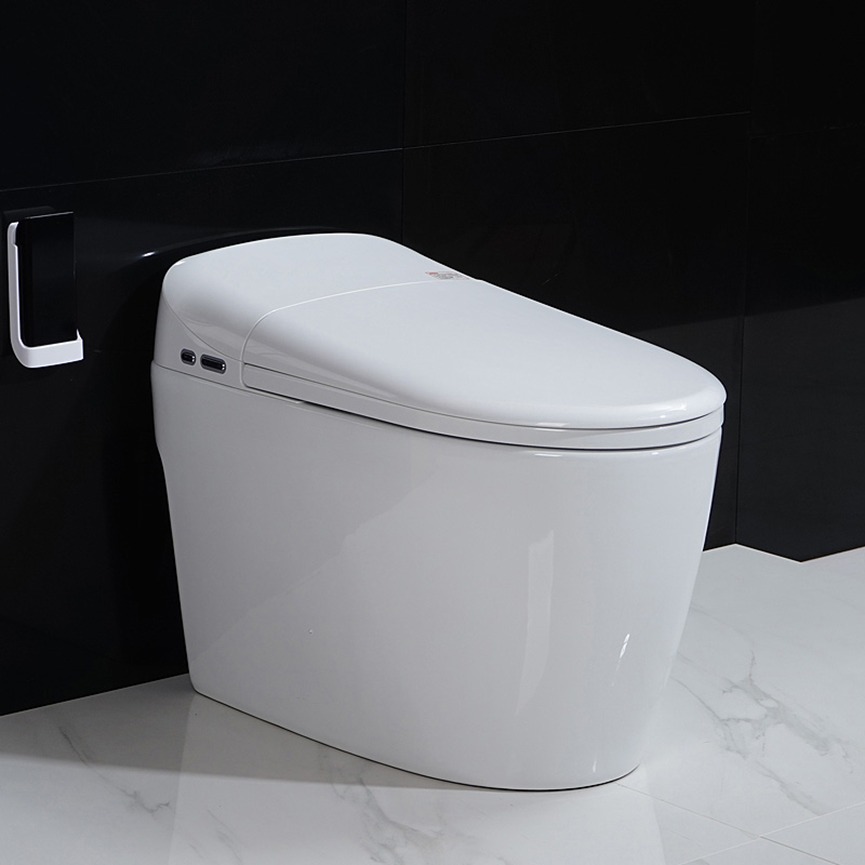In recent years, environmental sustainability has become a priority across various industries, including home appliances. When it comes to eco-friendly bathroom fixtures, watermark toilets have emerged as a game-changer.
Watermark toilets are designed not only for exceptional performance but also with a strong focus on water conservation, contributing significantly to reducing household water usage and supporting environmental efforts.
In this article, we will delve into the water-saving features of watermark toilets, the compliance with Australian standard toilets, and the broader impact of eco-friendly bathroom fixtures on both personal savings and the environment.
The Growing Need for Eco-Friendly Toilets
Water consumption in households is typically dominated by high-use appliances such as showers, washing machines, and—most notably—the toilet.
On average, traditional toilets use up to 13 litres of water per flush, contributing significantly to water wastage. This is a pressing issue, especially in water-scarce regions of Australia, where there is growing pressure on freshwater resources.
The push for sustainable bathroom solutions is more urgent than ever. Watermark toilets offer a solution to this problem. These toilets are designed to reduce water consumption without compromising on performance, making them ideal for homeowners who want to do their part in conserving water while still enjoying high-quality fixtures.
The watermark toilet Australia models have earned a reputation for meeting the high standards set by Australian authorities for water efficiency and overall performance.
Watermark toilets use innovative technologies to significantly reduce water usage without sacrificing flushing power, providing a sustainable solution for Australian homes.
Water Efficiency: Key Features of Watermark Toilets
A key feature of watermark toilets is their water efficiency. Thanks to advanced technologies, these toilets use less water while maintaining powerful flushing capabilities. Below are some of the main features that contribute to their eco-friendliness:
1. Dual-Flush Technology
Watermark toilets feature a dual-flush system, which allows the user to choose between two flush options: a smaller flush for liquid waste and a larger one for solid waste.
This system can drastically reduce the amount of water used, with some models using as little as 4.5 litres per flush. This is a significant reduction compared to traditional toilets, which can use up to 13 litres per flush.
By using the dual-flush system, households can make a noticeable difference in water consumption, especially for families with high bathroom usage. Over time, the savings add up, making dual-flush watermark toilets not just eco-friendly, but cost-effective as well.
2. Efficient Flush Performance
Despite using less water, watermark toilets are designed to ensure powerful and effective flushing. These toilets employ advanced technologies, such as pressure-assisted or vacuum-assisted flushing systems, to achieve a strong flush with minimal water. This ensures that the toilet remains effective and hygienic, even with reduced water consumption.
The flush performance of watermark toilet Australia models adheres to strict Australian standards, ensuring that they meet the performance expectations of Australian homeowners while staying within water-saving guidelines.
3. Compliance with Australian Standards
In Australia, watermark toilets must meet specific water efficiency and performance standards to be considered compliant with Australian standard toilets. The watermark certification is granted to products that have passed these stringent requirements.
This means that when you purchase a watermark toilet, you can be confident that it has been tested for optimal water-saving capabilities and meets the highest standards of quality and performance.
For what makes these products compliant with Australian standards, you can refer to the details from toilet bowl manufacturers, where further insights into the production and performance of watermark toilets are provided.
The Environmental Impact of Watermark Toilets
The environmental impact of watermark toilets is significant, especially in regions where water scarcity is a concern. By using advanced water-saving technologies, these toilets help conserve freshwater resources, reduce household water consumption, and lower overall environmental footprints.
1. Water Conservation
The primary environmental benefit of watermark toilets is water conservation. By reducing the amount of water used per flush, these toilets help households lower their overall water consumption.
A dual-flush watermark toilet can reduce water use by up to 50% compared to older, conventional toilets. This reduction can be significant over time, especially in larger households or regions facing water shortages.
Water-efficient toilets also ease the burden on local water supplies. In areas like parts of Australia, where water restrictions are frequently imposed due to droughts, the widespread use of watermark toilets could help reduce the demand for water and alleviate some of the pressure on the environment.
2. Reducing Carbon Footprints
Using less water also helps to reduce the carbon footprint associated with household water consumption.
Water treatment and distribution require energy, and the less water we use, the less energy is needed to process it. By switching to watermark toilets, households are contributing to a reduction in both water and energy consumption.
Furthermore, some watermark toilet Australia models incorporate energy-efficient features, further reducing their carbon footprint. This is an important consideration for homeowners who are aiming for a more sustainable lifestyle.
3. Sustainable Design and Materials
Sustainability isn’t just about water-saving technologies; it’s also about the materials used to make products. Many watermark toilets are designed with durable and long-lasting materials, reducing the need for frequent replacements.
This not only saves money but also reduces the amount of waste that ends up in landfills. Some models are made with recyclable materials, making them even more eco-friendly.
By choosing a watermark toilet, you’re not just helping to conserve water but also supporting more sustainable manufacturing processes.
Smart Toilets: The Future of Eco-Friendly Bathrooms
While watermark toilets already offer impressive water-saving features, the rise of smart toilets is taking eco-friendly bathroom technology to the next level. Smart toilet Australia models offer a range of advanced features that not only enhance user comfort but also improve water and energy efficiency.
1. Automatic Functions
Smart toilets often come equipped with automatic functions, such as self-opening lids, automatic flushing, and sensor-based controls. These smart features reduce the need for manual operation, which can lead to more efficient water usage.
Some models also feature adjustable water temperatures, seat warmth, and bidet functions, providing users with a more comfortable and hygienic bathroom experience.
2. Water-Saving Technologies in Smart Toilets
Many smart toilet Australia models integrate water-saving technologies, such as waterless urinals, eco-flush systems, and water-efficient bidet features.
These toilets are designed to use the least amount of water possible, without sacrificing functionality or comfort. For instance, the bidet functions on smart toilets typically use a controlled stream of water, ensuring a thorough clean with minimal water consumption.
Additionally, smart toilets can be programmed to adjust the volume of water used depending on the user’s needs, further reducing waste. This level of customization and water efficiency makes smart toilets an excellent option for eco-conscious consumers looking to reduce their environmental footprint.
Bidet Toilets: A Sustainable Alternative
In addition to watermark toilets, bidet toilet Australia models are another excellent choice for water-efficient bathrooms. Bidet toilets are gaining popularity due to their ability to improve hygiene while reducing the reliance on toilet paper.
1. Water-Saving Benefits of Bidet Toilets
Bidet toilets, especially those equipped with water-saving technologies, can significantly reduce water usage compared to traditional toilet paper-based toilets. A typical bidet toilet Australia uses a small stream of water to clean, which is both more effective and more eco-friendly than using large amounts of toilet paper.
By switching to a bidet toilet, households can reduce paper waste, lower their carbon footprint, and conserve water. Some models even feature drying functions, further reducing the need for paper towels or other disposable products.
2. Reducing Waste and Environmental Impact
In addition to saving water, bidet toilet Australia systems can help reduce the environmental impact associated with paper production and disposal.
The production of toilet paper requires large amounts of water, energy, and trees, which contributes to deforestation and greenhouse gas emissions. By using a bidet, households can play a role in reducing paper waste and supporting more sustainable bathroom practices.
Conclusion
The introduction of watermark toilets represents a significant step forward in the movement toward more sustainable and eco-friendly bathroom fixtures. Watermark toilets can bring a more comfortable and eco-conscious bathroom experience.
With innovative water-saving technologies, compliance with Australian standard toilets, and environmentally conscious design, watermark toilets help households conserve water and reduce their environmental footprint.







